Bath towels have a seemingly infinite combination of features, making it hard to understand which ones will actually work. This guide will give you the insider tips and tricks to choosing the best bath towel for your own unique needs.
We’ve broken down this comprehensive guide into five parts.
- Choose the right material
- Decide on weight
- Select the right type of construction
- Look for the size
- Evaluate cost
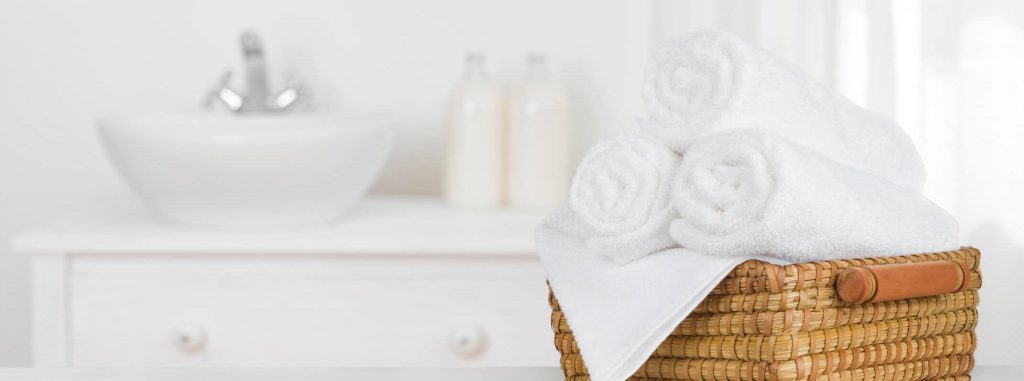
What is the best bath towel material?
Bath towels can be made of all sorts of materials. You may find the following in your search:
- Cotton
- Bamboo
- Microfiber
Most people agree that 100% cotton towels are the best bath towel material. However, not all cottons are the same. Just because a towel is 100% cotton doesn’t necessarily mean that it’ll be soft and absorbent.
Cotton
When you think of cotton, you think of that small white fluff ball. Cotton is a plant, and each one of those fluffs has nearly 300,000 individual cotton fibers. Every fiber in a cotton plant has its own length, strength, and quality. Higher quality cotton fibers are longer and are grown using methods that promote strength.
Often times, a 100% cotton bath towel still may shed or not be absorbent. This is most likely due to each cotton strand being shorter, making it easier to fall off the weave.
When searching for cotton bath towels, look for long-staple cotton. With long-staple cotton, each cotton fiber is between 1.1 inches to 1.4 inches, giving it extra absorbency.
Longer fiber length when woven yields a smoother surface with fewer loose strands, translating to less shedding. Because of this, each one of these long-staple strands can even become softer with more uses.
Another thing to look out for when fining the best bath towel are claims of Egyptian cotton or Turkish cotton. While it’s true that sometimes towels that claim they have Egyptian or Turkish cotton are extra soft and absorbent, the claim alone doesn’t mean anything. It’s very common for companies with these claims to mix fiber lengths.
Even if the cotton plant is from Egypt, you still could be getting short staple cotton in your towel, making it more likely to shed. Always verify these claims by looking for “long-staple” or by finding out the fiber length.
Bamboo
We recommend staying clear of bamboo bath towels. Bamboo is highly absorbent, but also takes significantly longer to dry than cotton towels. Origins of bamboo towels are also hard to trace. Several environmental groups have raised concerns over the ethics of mass forest harvesting to make bamboo towels.
The environmental advocacy group, Dovetail, found in a recent study that “Degradation of natural forests, tremendous biodiversity loss, widespread use of fertilizers and pesticides, loss of resilience in bamboo resources, and increased social and environmental risks linked to large-scale monoculture agriculture are among the costs [of bamboo products]”.
Microfiber
Microfiber towels are typically made with synthetic fibers like Polyester and Nylon. Microfiber towels can be highly compact. A full-size microfiber bath towel can fold into the size of a dictionary.
Like bamboo, microfiber seems absorbent as these small fibers have a large surface area. However, despite the claim, most microfiber towels simply push away moisture instead of absorbing it. While they may seem great initially, long-term absorbency isn’t the best.
They’re also expensive to make, resulting in a good microfiber towel being more costly than a comparable cotton towel.
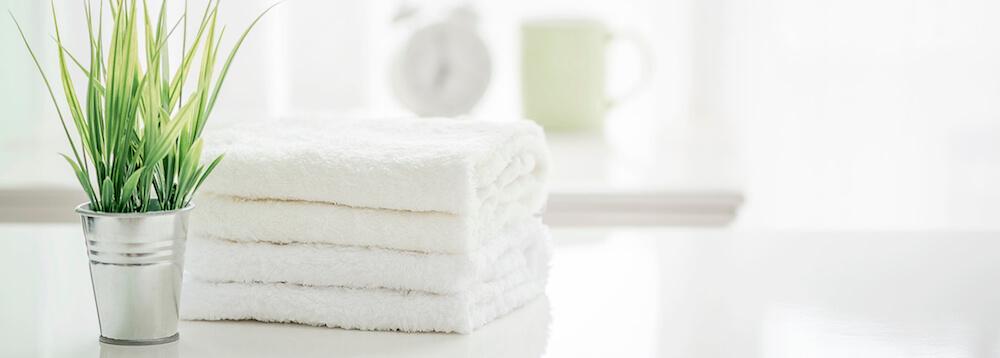
How do you measure bath towel weight?
Bath towels are measured in GSM, or grams per square meter. This is the easiest way to compare the density of a bath towel. Higher GSM bath towels will be softer and more absorbent than lower GSM bath towels.
When shopping, look for bath towels between 600 and 800 GSM. These bath towels will have a softer feeling, and will typically be more absorbent.
You should also be wary of bath towels that have claims they are over 800 GSM. There is a point where a bath towel will become too stiff and too heavy. That point varies based on the type and origin of material, but that point is typically over 800 GSM. You wouldn’t want your bath towel to feel like a bath mat!
Another consideration is the raw weight of the towel. If you’ll be using the towel to wrap your hair or lounge around for a long period of time, you wouldn’t want the towel to feel like a brick on your head. However, you still need to balance high absorbency with weight.
The perfect standard bath towel weight is between 1 – 1.5lbs. Thick enough to be extra absorbent without feeling too heavy. Anything less and you’ll feel like you’re wrapped in a sheet, and anything heavier and you’ll feel like you’re wrapped in a weighted blanket.
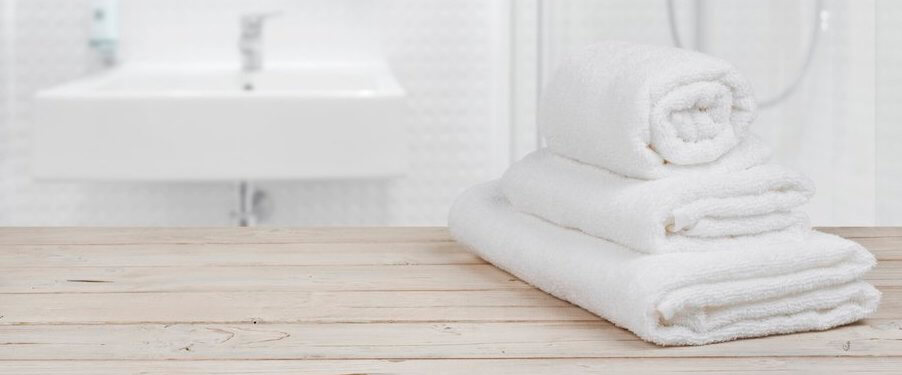
What is zero-twist? Looking at towel construction.
Finding what weave a bath towel uses can be difficult when shopping online. A good rule of thumb is if it’s not explicitly listed, assume the bath towel uses a lower-quality twisting method.
Bath towel construction can be broken down into two main categories: twist and zero-twist. Here are several keywords to look out as clues to determine how the towel is made.
| Twisted (lower quality) – Combed Cotton – Ring Spun – Two Ply | Zero-Twist (higher quality) – Zero Twist – Looped |
The main difference between zero twist and twisted cotton is exactly how it sounds. Twisted cotton twists cheaper strands of cotton to make more durable fibers. Zero twist towels use a longer and stronger cotton strand to begin with, and therefore don’t have to twist fibers together.
RELATED: Why are zero-twist bath towels better?
Look up close on any towel and you’ll see it for yourself. There are either twists or loops. Which one would you want rubbing up against your body? The edge of a pointy twist or a long, smooth, draping loop.
As hinted at above, the reason why all towels aren’t zero-twist is simple economics. Manufacturers can pass off towels as high quality “Egyptian Cotton”, even though they are actually using cheap twisted cotton methods.
Zero-twist cotton also has an extra benefit in how much it’s able to absorb and how quickly it’s able to dry. Because the cotton is looped, more surface area of the cotton is exposed, and therefore it can absorb more water.
With cheap twisted cotton, the fibers may be more inclined to push the water away, rather than absorb it. With zero-twist, or looped cotton, those loops create tiny pockets to better trap water and more quickly absorb it.
Another benefit of having more of the cotton surface exposed? Faster drying. Because of the greater surface area, more of the fiber is exposed to air, which allows the water to evaporate quicker.
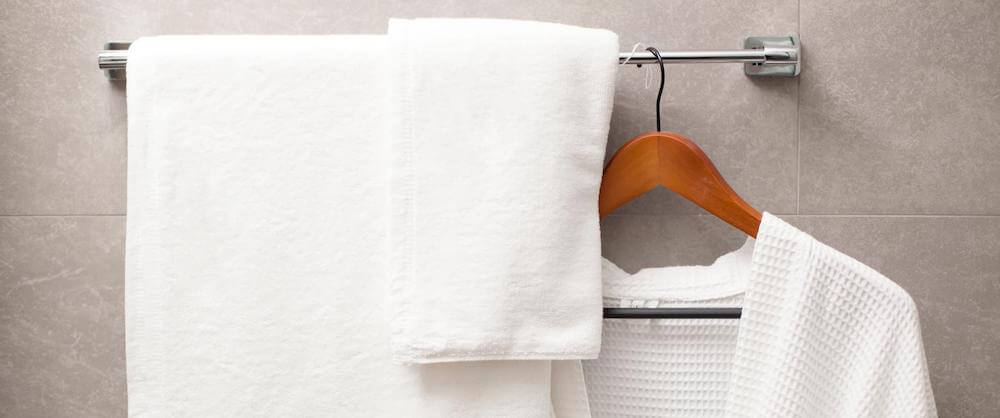
What are the different bath towel sizes?
Bath towels typically come in four sizes: washcloths, hand towels, bath towels, and bath sheets. Every towel can vary slightly, and there is no regulated terminology between the sizes.
| Bath Towel Type | Average Dimension |
| Washcloth | 13″ x 13″ |
| Hand Towels | 18″ x 25″ |
| Bath Towels | 28″ x 55″ |
| Bath Sheets | 40″ x 70″ |
How big is a washcloth?
The washcloth is the smallest type of towel. The average washcloth is usually 13 x 13 inches, or 33 x 33 cm. Sometimes, washcloths may be slightly smaller at 12 x 12 inches. Washcloths are used typically to wash your face, or smaller areas of the body.
How big is a hand towel?
Hand towels can range from 15 x 25 inches to 20 x 30 inches. The variation is small on paper, but five inches does have quite a big impact on size. We recommend looking for hand towels that are on the larger end of this spectrum for the best experience.
How big is a bath towel?
Bath towels have a tremendous range in size, ranging from 20 x 40 inches to 30 x 55 inches.
Size matters with a bath towel. A large bath towel can come close to the size of a bath sheet. If a company doesn’t offer bath sheets, check the size of the towel. Those “normal” bath towels may actually be large enough to rival a bath sheet.`
Small bath towels are good for kids or smaller teenagers. However, for most teens and adults, choosing a larger bath towel is recommended.
Bath towels can vary in length by close to 15 inches (over a foot!). Those extra few inches give you the extra drying space and surface you need, especially if you plan to wear your bath towel around.
How big is a bath sheet?
A typical bath sheet can range from 35 x 55 inches to 40 x 70 inches. A large bath towel is actually quite close to an average bath sheet.
Bath sheets offer more surface area to dry off after a bath or shower. They’re a great addition to your closet, even if you don’t use them every day.
One downside is bath sheets take up significant space in the washing machine, so you may have to run a few more loads of laundry if you opt for bath sheets.
Whether a towel is labeled as a “bath towel” or “bath sheet”, check the actual size, as bath towels can actually be the same size as bath sheets in some luxury towel brands.
We typically recommend a large bath towel rather than an average bath sheet to strike the right balance between size, weight, and absorbency.
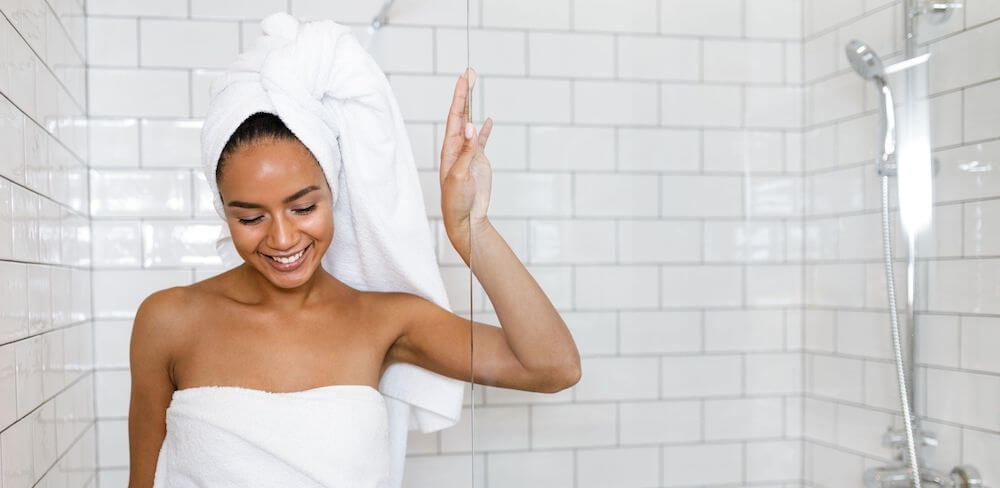
What should a bath towel cost?
Price can tell you a lot about the quality of a towel, but price alone shouldn’t be used as the only quality indication. Higher price towels may actually be of lower quality. We recommend using price, combined with information on material and construction, to make your decision.
We find that a great bath towel is typically between $20-$30. You can find towels for lower prices at big box stores, but you’re sacrificing quality.
You should view bath towels as a long-term investment. A quality towel will last you years, while a cheap towel may start to fall apart a week after your purchase.
There are companies which sell bath towels for over $100 each. While luxurious, they are only marginally better than those at lower price points.
If shopping online, look for companies which offer free returns, and watch out for any restock or return shipping fees. It’s hard to feel something through a screen. Don’t sink $100 in bath towels, only to be stuck with them if their online claims don’t meet your in-person expectations.
Final Thoughts
It’s tricky to shop for the best bath towel. Our five-bullet cheat sheet to follow would be to look for:
- 100% cotton
- At least 600 GSM in density
- Zero-twist construction
- Above average size (50” x 20” or higher)
- A reasonable cost of $20-$30 per towel with easy returns
Are you shopping for bath towels? Head on over to our shop page to view our version of perfect bath towel!
Authored by Brooke Holden on January 14th, 2020.
Brooke is a resident home textile expert at Wove. She enjoys simplicity, style, and sustainability in everything she reviews. By day she’s a professional interior designer and by night she’s scouring the web for the best towels, blankets, clothing, and everything in between!